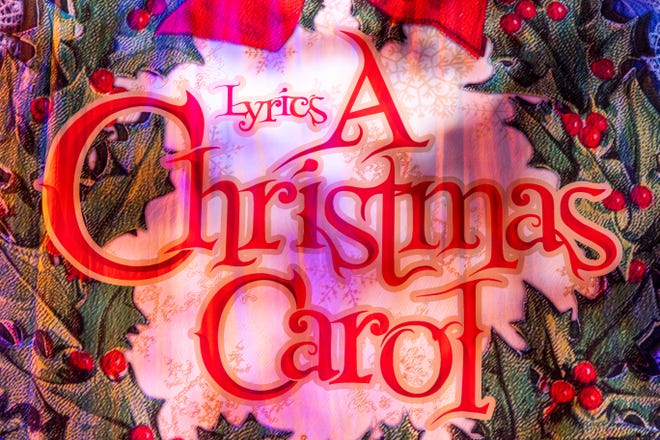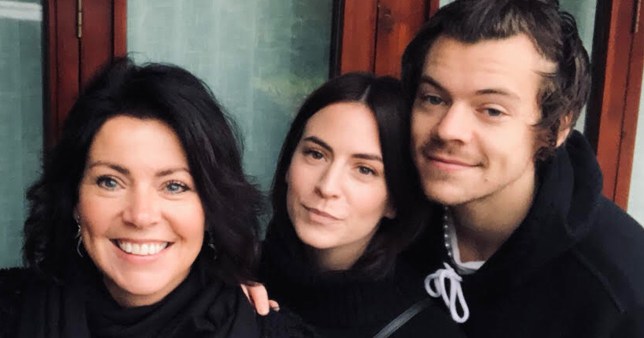
Last fall, the artist and musician Holly Herndon visited Torreciudad, a shrine to the Virgin Mary associated with the controversial Catholic group Opus Dei, in Aragón, Spain. The sanctuary, built in the nineteen-seventies, sits on a cliff overlooking an inviting blue reservoir, in a remote area just south of the Pyrenees. Herndon and her husband, Mathew Dryhurst, had been on a short vacation in the mountains nearby. They were particularly taken with an exhibit of Virgin Mary iconography from around the world: a faceless, abstract stone carving from Cameroon; a pale, blue-eyed statuette from Ecuador; a Black Mary from Senegal, dressed in an ornate gown of blue and gold. Moving from art work to art work, the couple discussed Mary’s “embedding.” In machine learning, embeddings distill data down to concepts. They are what enable generative A.I. systems to process prompts such as “Cubist painting of a tabby cat, wearing a hot-dog costume and eating a hot dog” or “country-club application, as a sestina.” At Torreciudad, the sculptures and paintings on display all had aesthetic and material differences, yet there was something consistent—ineffable but essential—that made the art works legible depictions of the same figure.
Around this time, Herndon and Dryhurst, who is also her primary collaborator, had been experimenting with the embedding of “Holly Herndon” in the data used to “train” text-to-image generators such as Dall-E and Stable Diffusion. Herndon, who is forty-three, has sea-glass-blue eyes, a round, pale face, and persimmon-colored hair; she tends to style it with bangs, a short bob in front, and a long braid in the back. The embedding of the Virgin Mary might be reduced to something involving her posture, gaze, and infant son; Herndon’s embedding is tied to her distinctive look. In 2021, she and Dryhurst began working on a series of computer-generated images, grouped under the title “CLASSIFIED,” that explored her embedding in an artificial neural network created by OpenAI. Though some of the art works are unsettling portraits of Herndonesque women rendered in the style of an oil painting, many are more playful: “x | o 40,” which used the prompt “A building that looks like Holly Herndon,” shows a stately white structure with brick-red bangs, two porthole windows, and pursed pink lips; “x | o 41” depicts a figure with buggy blue eyes and a red braid which could be fan art for “The Simpsons.” “My identity in models is determined by aggregate cliches scraped from the web,” Herndon recently tweeted. “I’m mostly a haircut!”
Herndon is perhaps best known for her experimental electronic music, and for an art practice that spans the art world, academia, and the tech industry. She has performed and shown work at the Guggenheim, the Pompidou, and the Kunstverein in Hamburg; next year, she and Dryhurst have an exhibition at the Serpentine, in London, and will be part of a “prestigious group show” this spring in New York. (When asked if the group show was the kind that happened only biennially, Herndon declined to elaborate.) In recent years, she and Dryhurst have also fought for artists’ self-determination in the era of A.I. “I always felt they were so far ahead of everybody else,” Hans Ulrich Obrist, the artistic director of the Serpentine, said. “They really think about what it does to the whole ecosystem: the artistic, the technical, the social, the economic aspects of these technologies.”
Since 2020, Herndon and Dryhurst have been refining Holly+, a machine-learning model trained on Herndon’s voice. They refer to the model as a digital twin and a “vocal deepfake,” and see it as an experiment in “decentralizing control” of Herndon’s public identity. “I’ve never really fetishized my voice,” Herndon told me. “I always thought my voice was an input, like a signal input into a laptop.” Holly+ can use a timbre-transfer machine-learning model to translate any audio file—a chorus, a tuba, a screeching train—into Herndon’s voice. It can also be used in real time or be fed a score and lyrics: last year, Herndon gave a TED talk that opened with a recording of Holly+ singing an arrangement by Maria Arnal, a Catalan musician. It was a performance Herndon could never do. “These beautiful, melismatic runs—you have to study that stuff for years,” she said. (She also does not speak Catalan.) Several months later, Herndon released a track in which Holly+ covers “Jolene,” by Dolly Parton. It’s glitchy, with oddly placed breaths and slurred phrases, and is weirdly compelling. A free version of Holly+ is available online. When I uploaded a clip of sea lions barking, it returned a grunting, stuttering, portentous motet.
Holly+ represents the future that Herndon and Dryhurst anticipate for music, art, and literature: a world of “infinite media,” in which anyone can adjust, adapt, or iterate on the work, talents, and traits of others. The two refer to the process of generating new media this way as “spawning”—an act they distinguish from well-known forms of allusion such as sampling, pastiche, collage, and homage. When a d.j. samples an audio clip from another artist, the clip is copied, then recontextualized. Neural networks, on the other hand, don’t reproduce their training data but represent its internal logic—something like a style, a mood, or a vibe. Herndon uses the phrase “identity play”—a pun of sorts on “I.P.”—to describe the act of allowing other people to use her voice. “What if people were performing through me, on tour?” she said. “Kind of like body swapping, or identity swapping. I think that sounds exciting.” Decisions about what to do with Holly+ are made by a decentralized autonomous organization—a sort of coöperative group of digital “stewards.” (Herndon retains a veto.) The musician Caroline Polachek told me, “I see it as an inevitability that voice modelling will be outside of artists’ control, that people will eventually be able to use my voice with or without my consent. Holly specifically has woken up a lot of the art and music community to this window of time we have, to determine what we want to do with that.”
In conversation, Dryhurst described Holly+ as an “abstracted fork” of Herndon’s identity—in open-source-software development, forking is the act of copying source code and then changing it. Herndon alternated between calling it “my voice” and “the voice.” “It’s not like you don’t have a relationship with that version of you,” she told me. “It’s still an emotional connection, but it’s not you.” Public identities already take on lives of their own, the couple noted; most of the publicly available images of Herndon, which “CLASSIFIED” drew from, are press photos. Years ago, while experimenting with machine-learning software, she and Dryhurst realized that all existing media could be used to train A.I. systems, an idea that now informs their art practice. “As soon as something is machine-legible, it’s part of a training canon,” Herndon told me. “And that’s very radicalizing.”
We were sitting outside their bedroom in Berlin, in a white-walled apartment so spacious, high-ceilinged, and affordable that it felt almost like a slight. Their infant son, Link, played quietly with a babysitter in the living room. A large print by the artist Trevor Paglen, titled “Tornado (Corpus: Spheres of Hell) Adversarially Evolved Hallucination,” hung over the couch; it depicted a neural network’s concept of a tornado. In the bedroom, previously Herndon’s music studio, large white acoustic panels hung from the walls and ceiling, framing a low, unmade bed and a small bookcase—Mark Fisher, Michel Houellebecq, “Baby-Led Weaning.” A towering dieffenbachia plant, inherited from an elderly neighbor who had recently died, slouched against the doorframe. Dryhurst, who is thirty-nine, bald, and bespectacled, offered to demonstrate Holly+. “See if it sounds the same with speech,” Herndon, who was wearing white overalls, instructed. Dryhurst picked up a microphone, and chatted for a moment; Holly+, processing his voice—he has an English accent—sounded drunk and a little congested. “It’s optimized for singing,” Herndon said, laughing. Dryhurst sang a sequence of notes. After a tiny lag, Holly+ began to harmonize with him, and then the real Herndon joined in. The choral effect was pleasant, if chaotic. “She’s definitely a better singer than I am,” Herndon said.






